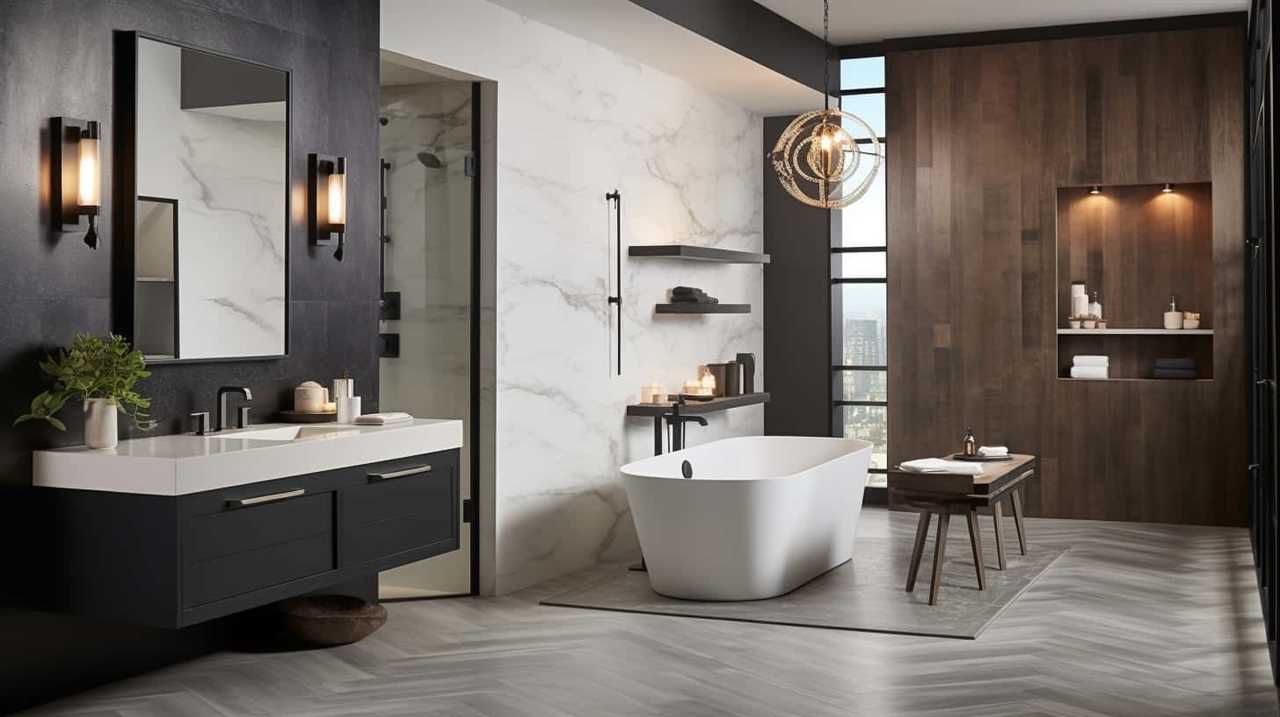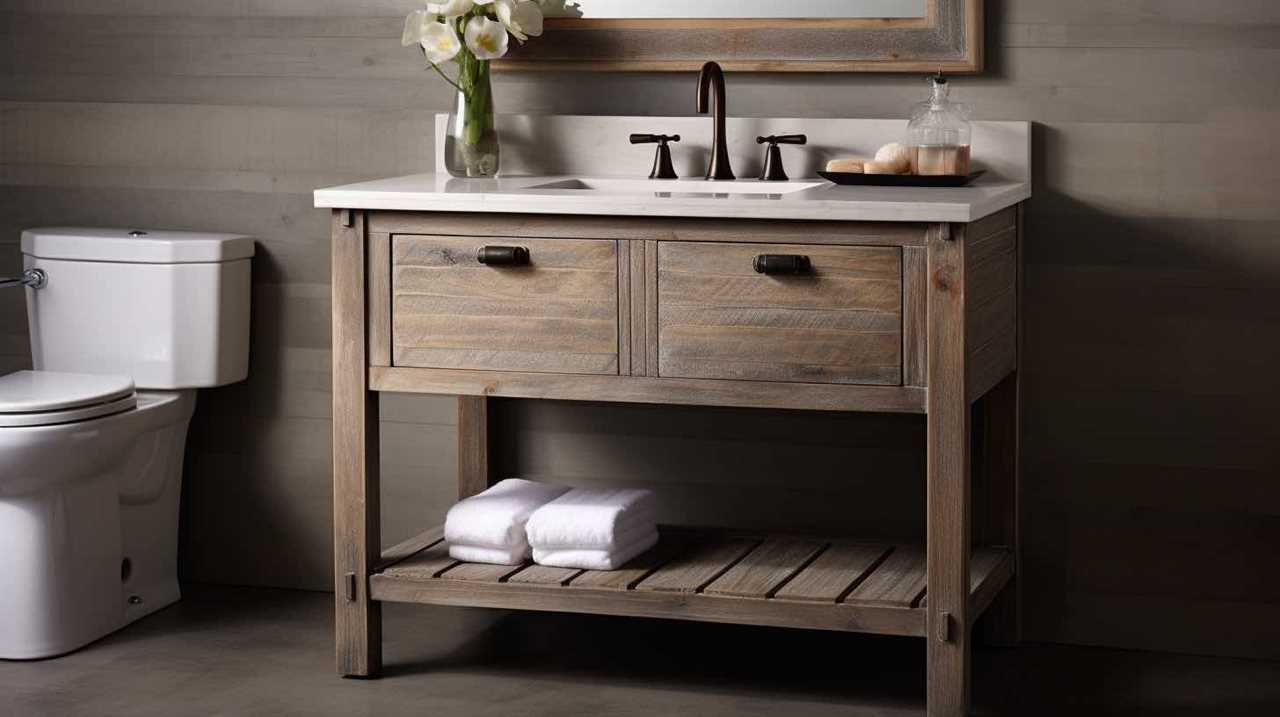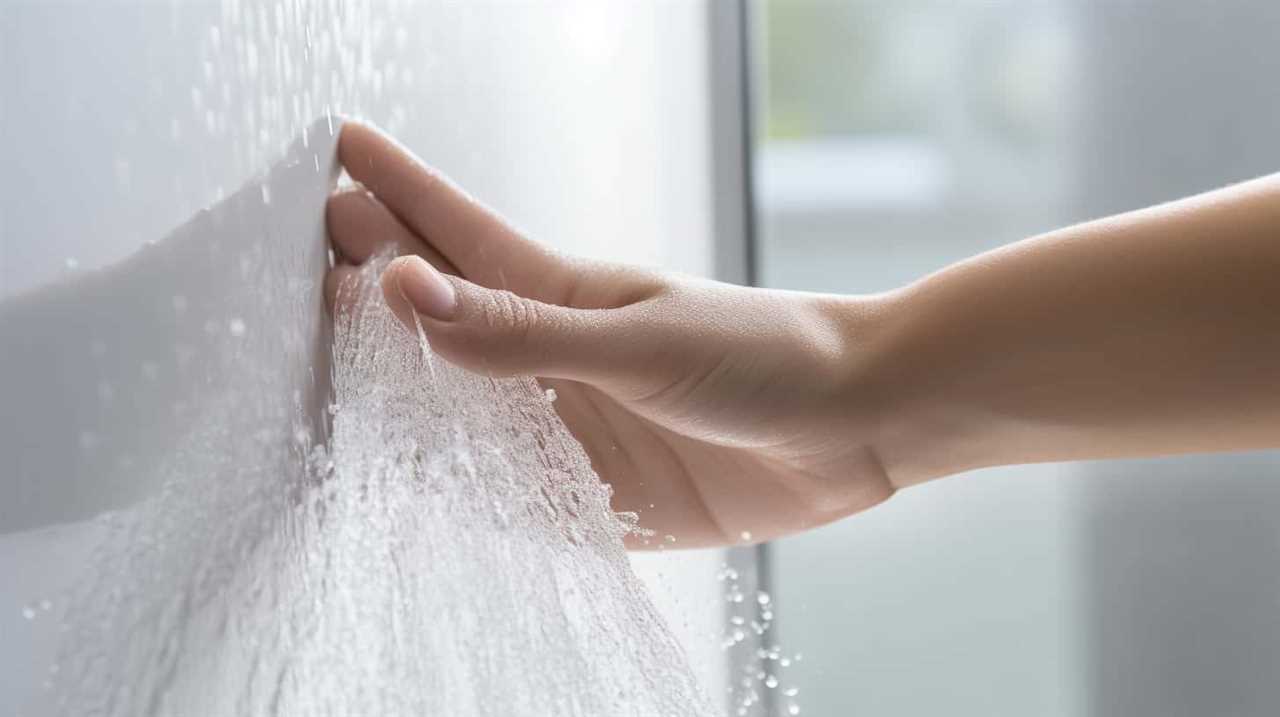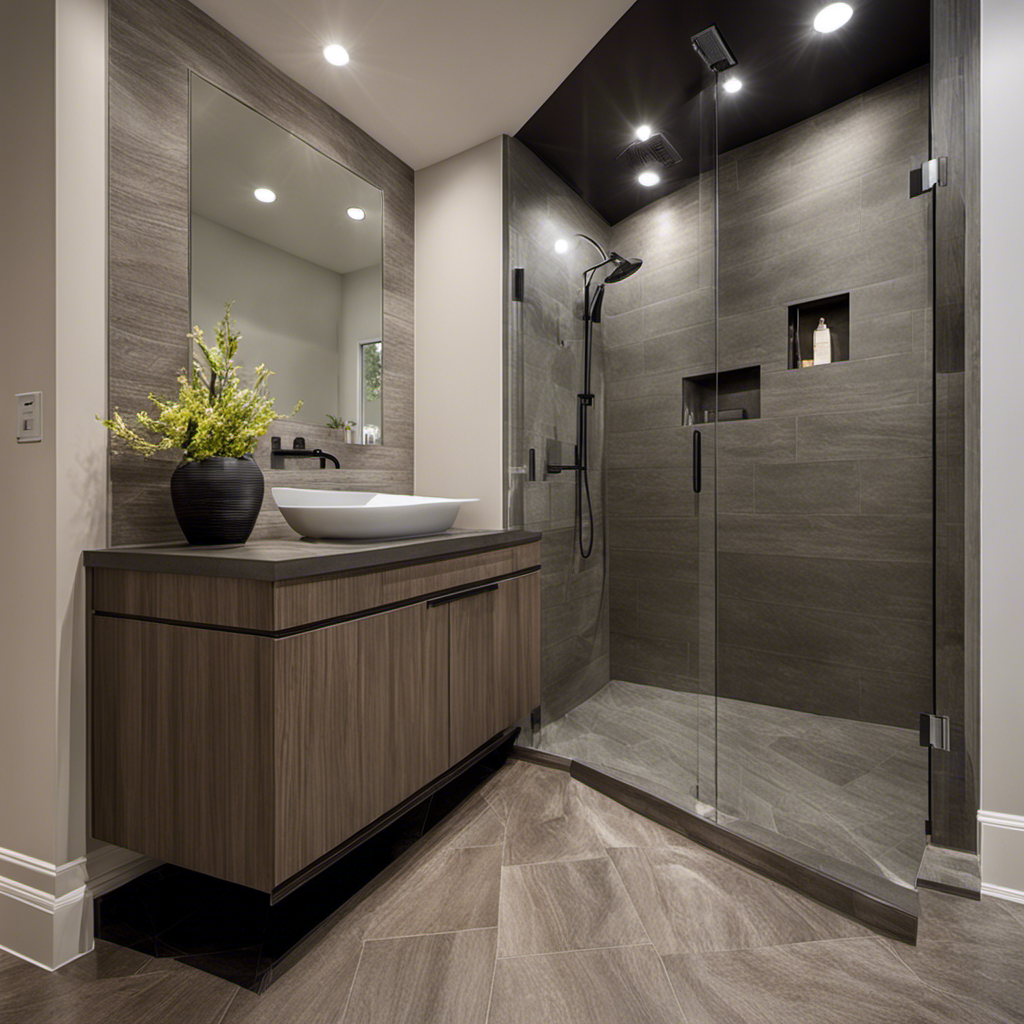Have you ever wondered why our bathrooms seem to attract those pesky ants? It’s a common issue that many of us face.
In this article, we will delve into the reasons behind these ant infestations and explore the science behind their attraction to moisture and water sources.
We’ll also uncover how they manage to find their way into our bathrooms and the food sources that entice them.
Finally, we’ll provide effective strategies to prevent and eliminate these unwanted visitors.

Key Takeaways
- Poor sanitation habits attract ants to areas with food and water sources.
- Ants are highly dependent on water for survival and maintaining nest humidity.
- Ants navigate through small cracks and openings in search of moisture and sustenance.
- Ants are attracted to sweet, sugary substances found in toothpaste, soap residue, and hair products.
Common Reasons for Bathroom Ant Infestations
We often find ourselves wondering why bathroom ants keep showing up, and one common reason for these infestations is poor sanitation habits. Ants are attracted to areas with food and water sources, and if we leave crumbs or spills in the bathroom, it becomes an ideal environment for them to thrive.
To prevent ant infestations, it’s essential to maintain good sanitation practices. Regularly clean and wipe down surfaces, especially around sinks and toilets, to remove any food debris or water droplets that may attract ants.
Additionally, using natural ant repellents can help deter ants from entering the bathroom. Ingredients like vinegar, lemon juice, and cinnamon are known to repel ants.
Attraction of Ants to Moisture and Water Sources
To further understand the persistence of bathroom ants, it’s important to consider their strong attraction to moisture and various water sources.

Ants are highly dependent on water for survival, as they require it for hydration and to maintain the humidity levels of their nests. In bathrooms, the presence of water and moisture can be particularly enticing to ants, as it provides them with a readily available resource.
This attraction to water can be one of the primary causes of ant infestations in bathrooms. Not only do ants seek out water sources for their own needs, but their presence can also have a significant impact on bathroom hygiene. Ants can contaminate surfaces and food with bacteria and pathogens, posing a potential health risk.
Understanding the role of moisture in attracting ants is crucial in preventing and managing bathroom ant infestations.
Moving forward, let’s explore how ants find their way into your bathroom.

How Ants Find Their Way Into Your Bathroom
After being attracted to moisture and water sources in the bathroom, ants often find their way into the space through small cracks and openings. Ants are highly adaptable creatures and have evolved to thrive in urban environments. When it comes to finding their way, ants rely heavily on pheromones, chemical signals they leave behind to communicate with other ants.
Here’s how ants navigate their way into your bathroom:
- Pheromone trails: Ants lay down pheromone trails to mark safe paths and food sources. These trails act as signposts for other ants to follow.
- Scouting: Ant scouts venture out in search of new resources. Once they find a water source or food, they leave a trail of pheromones to guide their colony members.
- Following structural flaws: Ants can detect even the tiniest cracks and openings in walls, floors, or pipes. They use these openings as entry points to infiltrate your bathroom.
- Exploratory behavior: Ants are curious creatures and will explore any new environment to find potential food and water sources. If they stumble upon your bathroom, they’ll leave pheromones behind, attracting more ants to follow their trail.
Understanding ant behavior and the role of pheromones is crucial in preventing ant infestations in your bathroom. By sealing cracks and eliminating moisture sources, you can discourage ants from finding their way inside.
Food Sources That Attract Ants to Bathrooms
Ants are attracted to bathrooms due to the presence of food sources. These tiny creatures possess a keen sense of smell, allowing them to detect even the smallest traces of food. Common food sources that attract ants to bathrooms include toothpaste, soap residue, and hair products. Ants are particularly drawn to the sweet, sugary substances found in these products.

Additionally, leaky faucets or pipes can create pools of water that provide hydration for the ants. To prevent ants from being attracted to bathrooms, it’s crucial to maintain cleanliness and proper hygiene. Regularly clean the bathroom, ensuring that all surfaces are free of food debris and spills. Fix any plumbing issues promptly to eliminate standing water.
Effective Strategies to Prevent and Eliminate Bathroom Ants
Once we’ve identified the food sources that attract ants to bathrooms, we can now explore effective strategies to prevent and eliminate these unwanted pests.
Here are four evidence-based strategies to help you deal with bathroom ants:
- Natural ant repellents: Use substances like vinegar, lemon juice, or peppermint oil to create a barrier that ants won’t cross. These natural repellents are safe and non-toxic, making them ideal for bathroom use.
- DIY ant elimination methods: Try making your own ant traps using a mixture of borax and sugar, or a solution of dish soap and water. These homemade baits can effectively lure and eliminate ants without the need for harsh chemicals.
- Keep the bathroom clean and dry: Regularly clean up any spills, crumbs, or food debris that may attract ants. Additionally, fix any leaks or moisture issues in the bathroom to discourage ant infestations.
- Seal entry points: Close off any cracks, gaps, or holes in the walls, floors, and pipes to prevent ants from entering the bathroom. Use caulk or weatherstripping to seal these entry points effectively.
Frequently Asked Questions
How Do Ants Reproduce and Increase Their Population in the Bathroom?
Ants reproduce through a process called sexual reproduction, where males and females mate. In the bathroom, ants may find suitable conditions for nesting and foraging, allowing them to increase their population. Ants play a crucial role in the ecosystem, contributing to soil health and nutrient cycling.

Can Ants Cause Any Health Risks or Spread Diseases in the Bathroom?
Ants in the bathroom can pose health risks. They can contaminate surfaces with bacteria and allergens. To prevent and eliminate them, maintain cleanliness, seal entry points, and use ant baits or sprays.
Are Certain Types of Ants More Commonly Found in Bathrooms?
Certain types of ants, such as pharaoh ants and Argentine ants, are commonly found in bathrooms due to their preference for moisture. Understanding ant behavior and implementing effective ant control methods can help manage infestations.
What Are the Signs of a Severe Ant Infestation in the Bathroom?
When faced with a severe ant infestation in the bathroom, we should be alert to signs such as trails of ants, visible nests, and an overwhelming presence of these tiny invaders. Taking immediate action and implementing effective prevention methods is crucial to eradicate the problem.
Can Ants Cause Any Structural Damage to the Bathroom?
Ants can cause structural damage in the bathroom. They can chew through wood, weaken structures, and create pathways for water damage. Additionally, their presence poses health risks as they can spread diseases and their reproduction can lead to a population increase.

Conclusion
In conclusion, the presence of bathroom ants can be attributed to their relentless search for moisture and food sources. These tiny creatures are like determined explorers, navigating their way through crevices and gaps to access the water and sustenance they need.
By understanding their motivations and implementing effective prevention and elimination strategies, we can successfully rid our bathrooms of these persistent intruders. So let’s be vigilant in our efforts, sealing every crack and cranny, and reclaim our bathrooms as pristine havens free from the invasion of these unwelcome guests.










